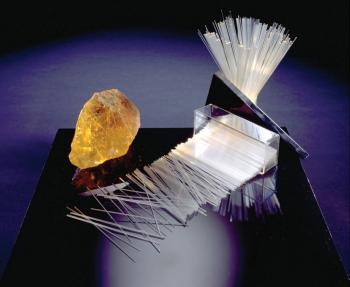Capillary Glass & Filaments
Borosilicate capillaries for micropipettes with or without filament are used for making microelectrodes and as sampling devices for biochemical analyses.
- Overview
- Specifications
- References
- Links
In addition to the best micropipette pullers on the market, Sutter Instrument Company offers a large variety of premium capillary glasses in different sizes and materials. Although there are numerous capillary glass sizes and types available, we have carefully chosen just those that meet our standards. You may rely on our knowledge of micropipette technology for accuracy and superior products.
Three different compositions of capillary glass tubing are available from us: quartz, borosilicate, and aluminosilicate. The choice will be based on your application and the skills of your puller. Each composition has its own distinct features.
Fire Polishing
Sutter Instrument sells capillary glass made of borosilicate and aluminosilicate only with fire-polished ends. It is easy to fit into holders thanks to the removal of any sharp edges, and the electrical or mechanical qualities of the glass are unaffected.
Custom Pipettes
Custom pipettes and microtools made by Sutter Instrument are not often offered by other pipette manufacturers. As an illustration, we produce personalized pre-pulled beveled pipettes for microinjection. The custom pipettes are made for research purposes and other than human use, and they are not sterile.
Sizes
With a wide selection of wall thicknesses offered by Sutter Instrument capillary tubing, you can choose the size required for your application. Inside-to-outside diameter ratios typically vary from 0.5 to 0.75mm, with the lower figure denoting thick wall tubing and the upper end denoting thin wall tubing. When all other variables are held constant, capillaries with larger walls yield pipettes with longer tapers and smaller tips, which are better suited for use as intracellular microelectrodes. These pipettes with thicker walls have a tendency to have lower noise contributions from capacitance, making them better suited for patch clamp applications. Larger pore apertures made possible by thinner wall tubing are perfect for microinjection needles and low resistance microelectrodes.
TechNote: What is filamented glass?
The inner wall of a pipette made of filament glass has a small glass rod that has been annealed to it. This rod's capillary action is what allows the pipette to be filled with solution from the back. We advise "filamented-glass" if the resulting pipette tip is less than 1 µl and being used for microinjection or for recording. The filament in the glass helps to prevent air bubbles from forming when solution is added to the pipette, in addition to providing capillary action for rapid filling of the micropipette.
The instrument was used in these investigations:
- Patch-clamp recording of ion channels: Interfering effects of patch pipette glass.
Zuazaga C., Steinacker A.
News in Physiological Sciences: International Union of Physiological Sciences and the American Physiological Society: 5:155-158, August 1990 - A Method for exceptionally low noise single channel recordings.
Rae, James L., Levis Richard A.
Pfl??gers Archive; European Journal of Physiology:420:618-620, Springer-Verlag 1992
You can also visit site of the manufacturer.


